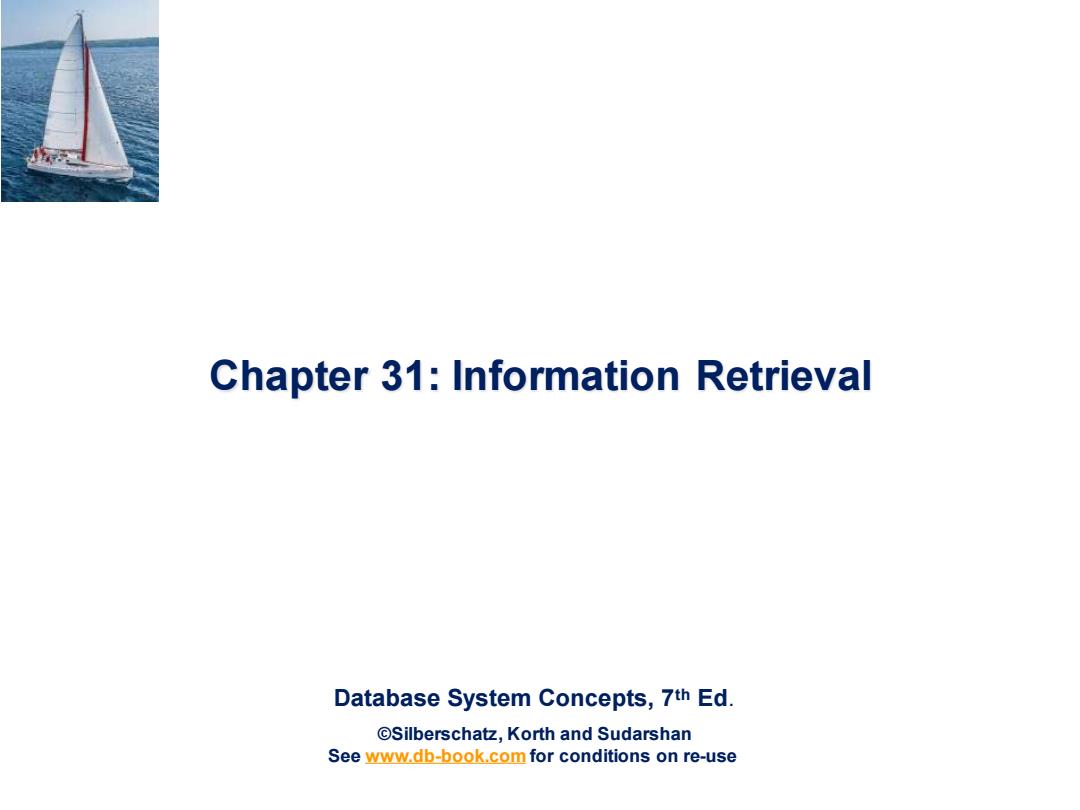
Chapter 31:Information Retrieval Database System Concepts,7th Ed. @Silberschatz,Korth and Sudarshan See www.db-book.com for conditions on re-use
Database System Concepts, 7th Ed. ©Silberschatz, Korth and Sudarshan See www.db-book.com for conditions on re-use Chapter 31: Information Retrieval
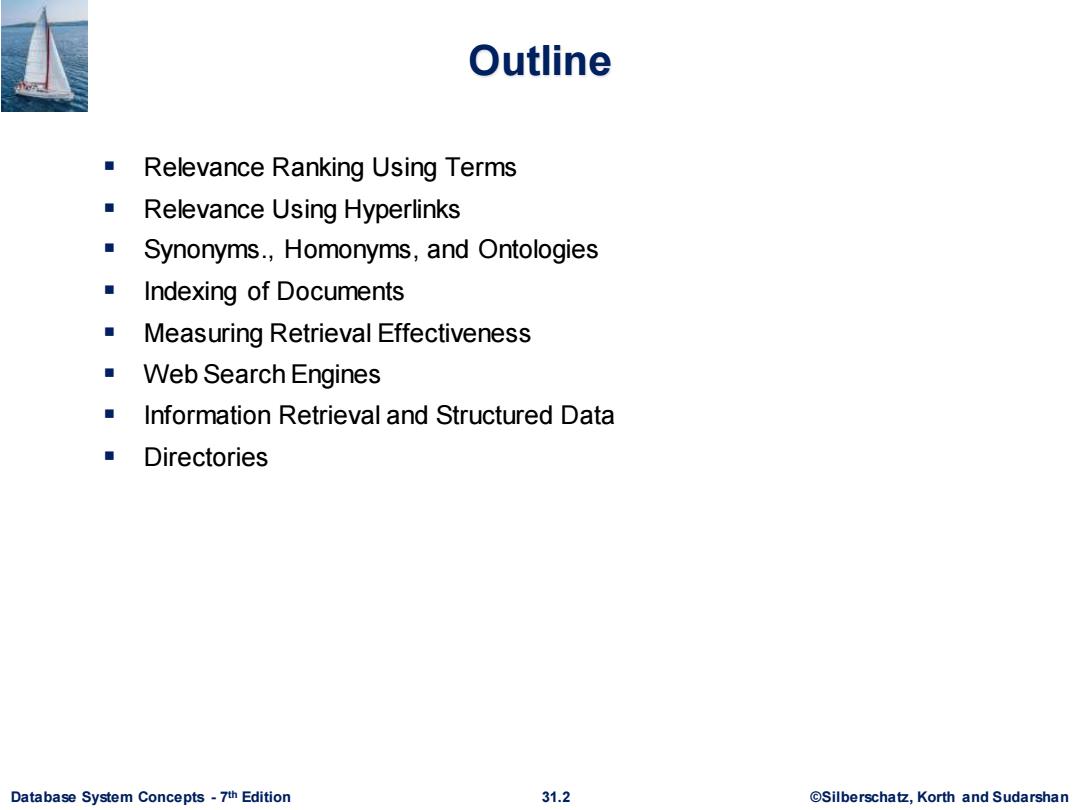
Outline Relevance Ranking Using Terms Relevance Using Hyperlinks Synonyms.,Homonyms,and Ontologies Indexing of Documents Measuring Retrieval Effectiveness ■Veb Search Engines Information Retrieval and Structured Data Directories Database System Concepts-7th Edition 31.2 ©Silberscha乜,Korth and Sudarshan
Database System Concepts - 7 31.2 ©Silberschatz, Korth and Sudarshan th Edition Outline ▪ Relevance Ranking Using Terms ▪ Relevance Using Hyperlinks ▪ Synonyms., Homonyms, and Ontologies ▪ Indexing of Documents ▪ Measuring Retrieval Effectiveness ▪ Web Search Engines ▪ Information Retrieval and Structured Data ▪ Directories
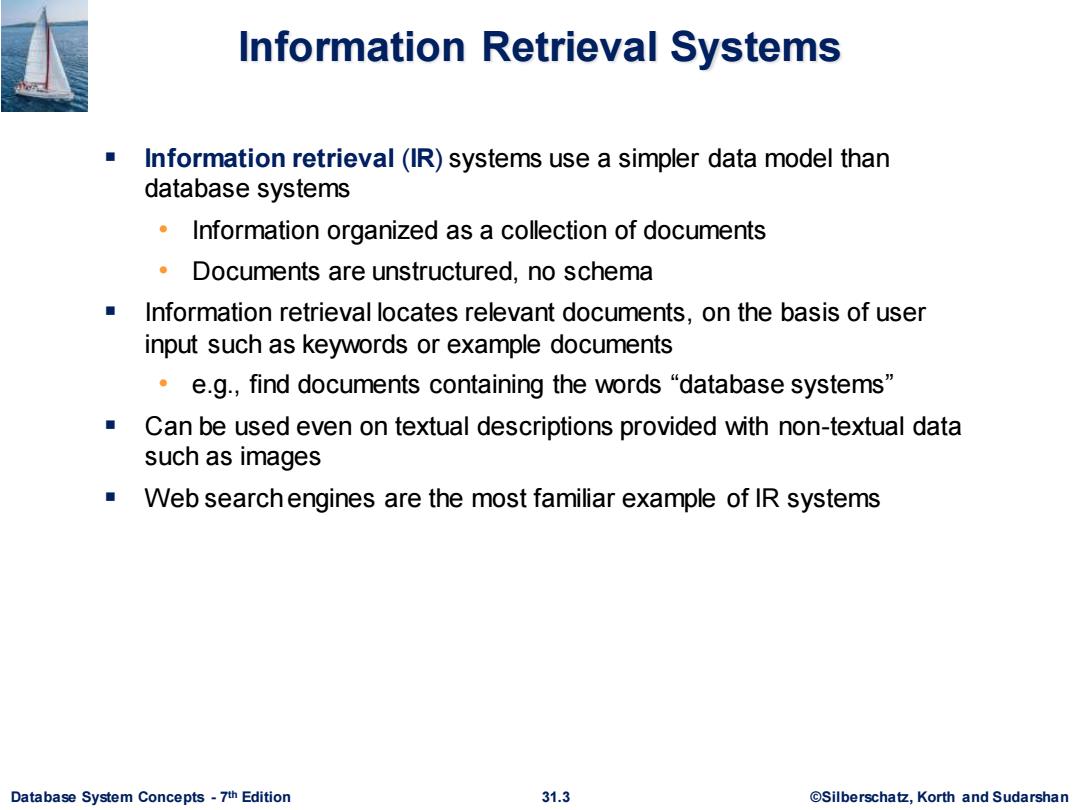
Information Retrieval Systems Information retrieval(IR)systems use a simpler data model than database systems Information organized as a collection of documents Documents are unstructured,no schema Information retrieval locates relevant documents,on the basis of user input such as keywords or example documents ·e.g.,find documents containing the words“database systems” Can be used even on textual descriptions provided with non-textual data such as images Web search engines are the most familiar example of IR systems Database System Concepts-7th Edition 31.3 ©Silberscha乜,Korth and Sudarshan
Database System Concepts - 7 31.3 ©Silberschatz, Korth and Sudarshan th Edition Information Retrieval Systems ▪ Information retrieval (IR) systems use a simpler data model than database systems • Information organized as a collection of documents • Documents are unstructured, no schema ▪ Information retrieval locates relevant documents, on the basis of user input such as keywords or example documents • e.g., find documents containing the words “database systems” ▪ Can be used even on textual descriptions provided with non-textual data such as images ▪ Web search engines are the most familiar example of IR systems
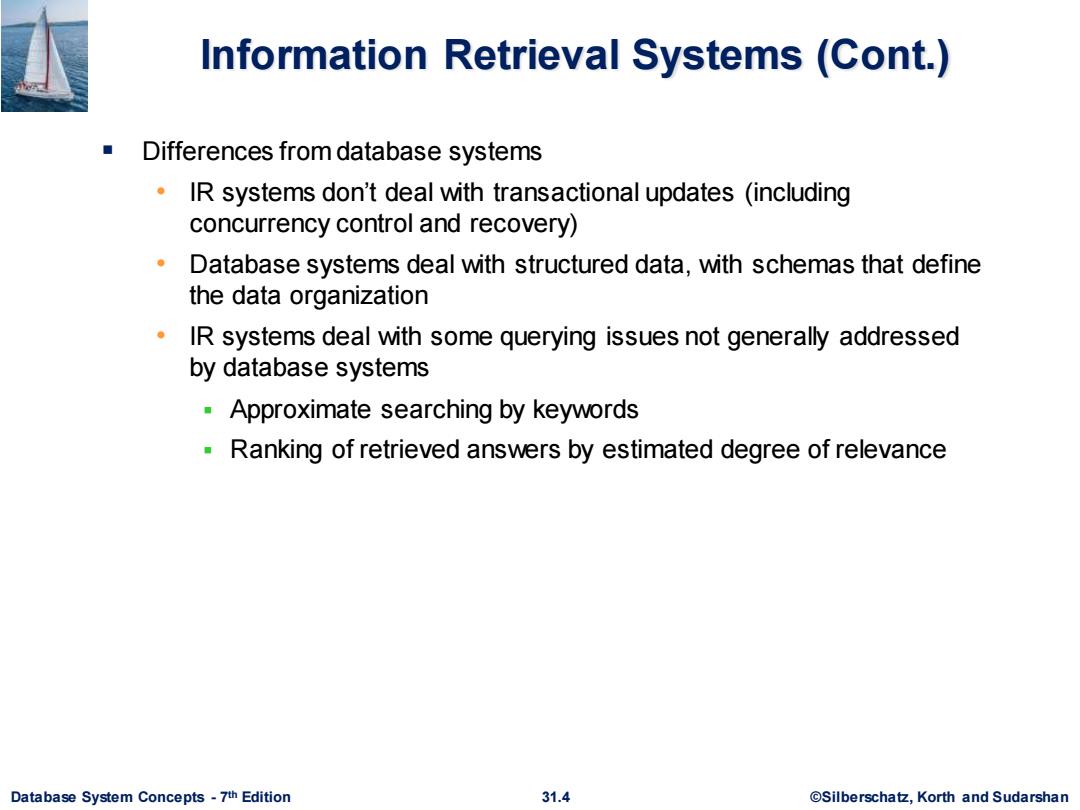
Information Retrieval Systems (Cont.) Differences from database systems IR systems don't deal with transactional updates (including concurrency control and recovery) 。 Database systems deal with structured data,with schemas that define the data organization IR systems deal with some querying issues not generally addressed by database systems Approximate searching by keywords Ranking of retrieved answers by estimated degree of relevance Database System Concepts-7th Edition 31.4 ©Silberscha乜,Korth and Sudarshan
Database System Concepts - 7 31.4 ©Silberschatz, Korth and Sudarshan th Edition Information Retrieval Systems (Cont.) ▪ Differences from database systems • IR systems don’t deal with transactional updates (including concurrency control and recovery) • Database systems deal with structured data, with schemas that define the data organization • IR systems deal with some querying issues not generally addressed by database systems ▪ Approximate searching by keywords ▪ Ranking of retrieved answers by estimated degree of relevance
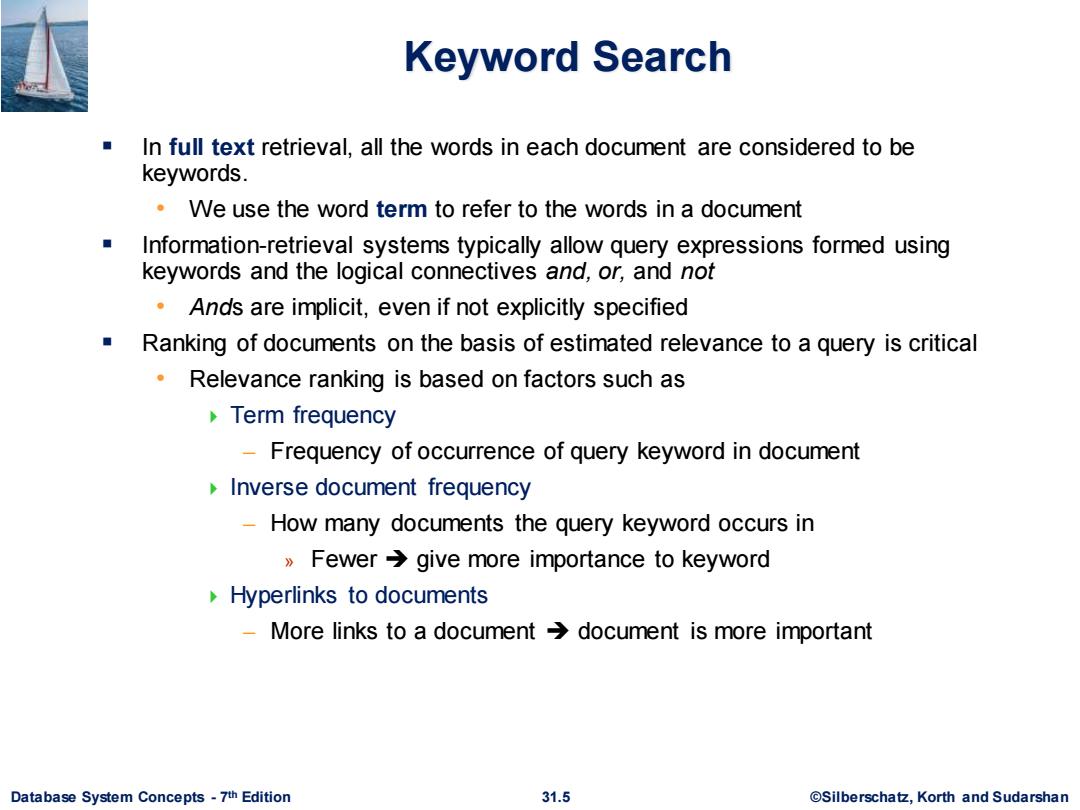
Keyword Search In full text retrieval,all the words in each document are considered to be keywords. We use the word term to refer to the words in a document Information-retrieval systems typically allow query expressions formed using keywords and the logical connectives and,or,and not Ands are implicit,even if not explicitly specified Ranking of documents on the basis of estimated relevance to a query is critical Relevance ranking is based on factors such as Term frequency -Frequency of occurrence of query keyword in document Inverse document frequency -How many documents the query keyword occurs in 》Fewer→give more importance to keyword Hyperlinks to documents -More links to a document>document is more important Database System Concepts-7th Edition 31.5 ©Silberscha乜,Korth and Sudarshan
Database System Concepts - 7 31.5 ©Silberschatz, Korth and Sudarshan th Edition Keyword Search ▪ In full text retrieval, all the words in each document are considered to be keywords. • We use the word term to refer to the words in a document ▪ Information-retrieval systems typically allow query expressions formed using keywords and the logical connectives and, or, and not • Ands are implicit, even if not explicitly specified ▪ Ranking of documents on the basis of estimated relevance to a query is critical • Relevance ranking is based on factors such as Term frequency – Frequency of occurrence of query keyword in document Inverse document frequency – How many documents the query keyword occurs in » Fewer ➔ give more importance to keyword Hyperlinks to documents – More links to a document ➔ document is more important